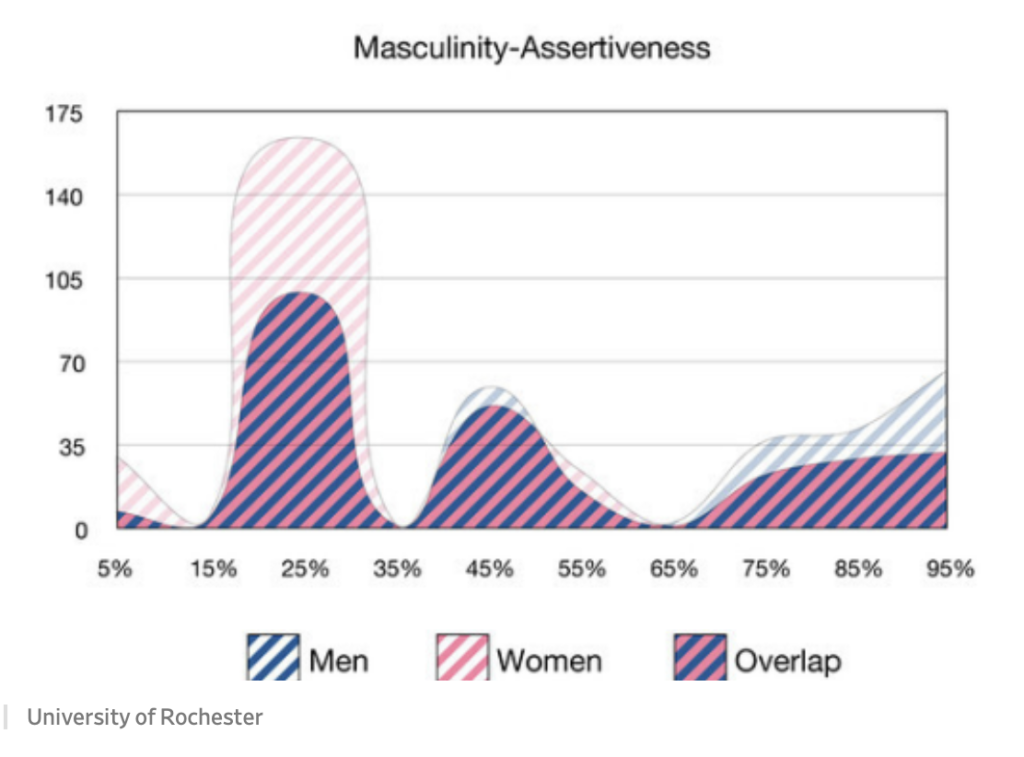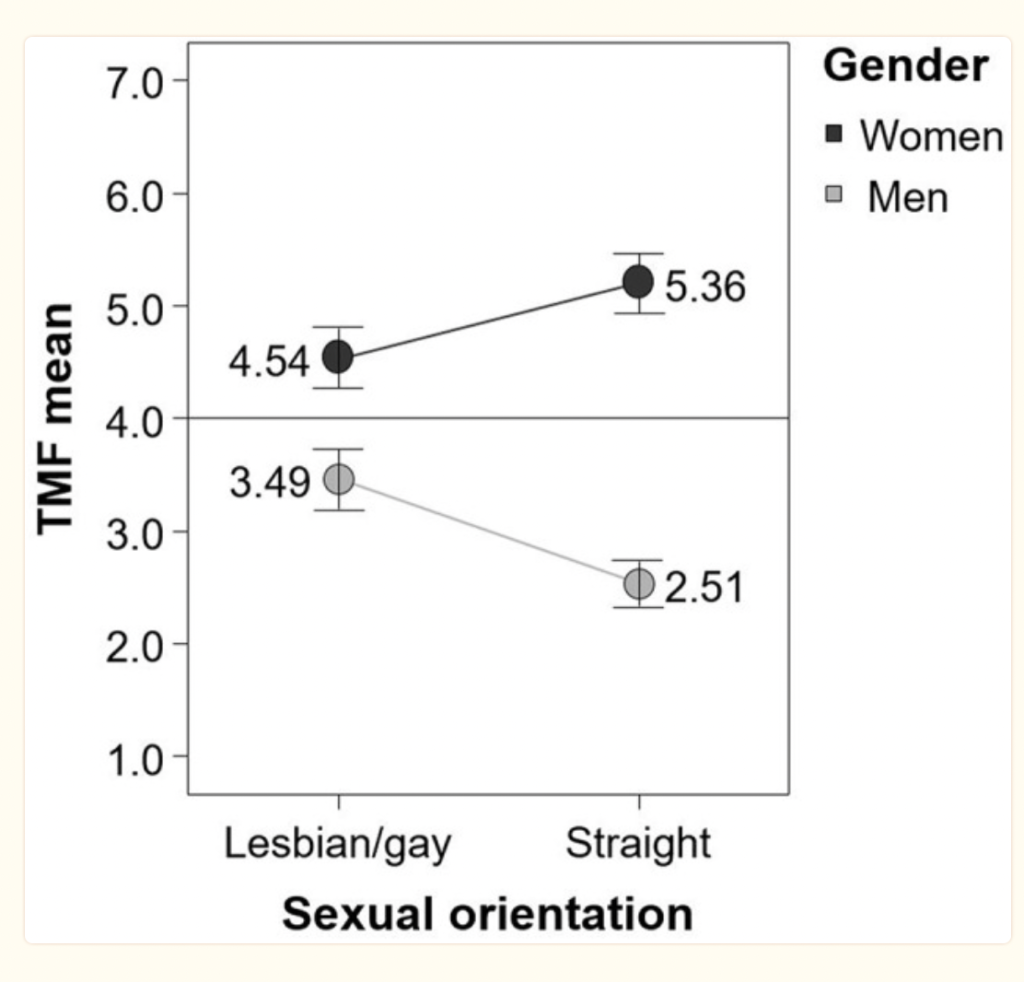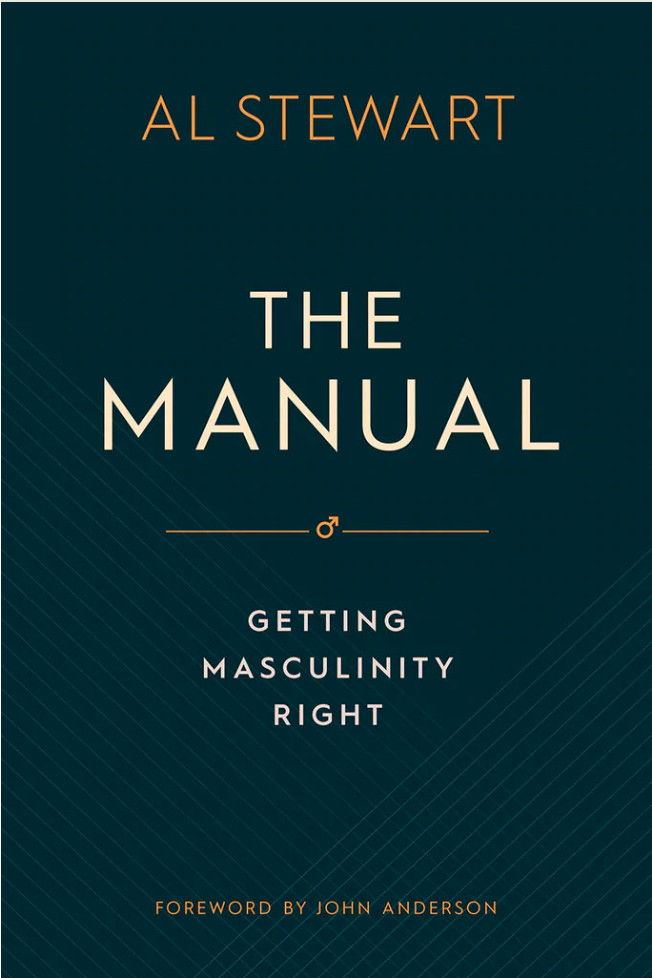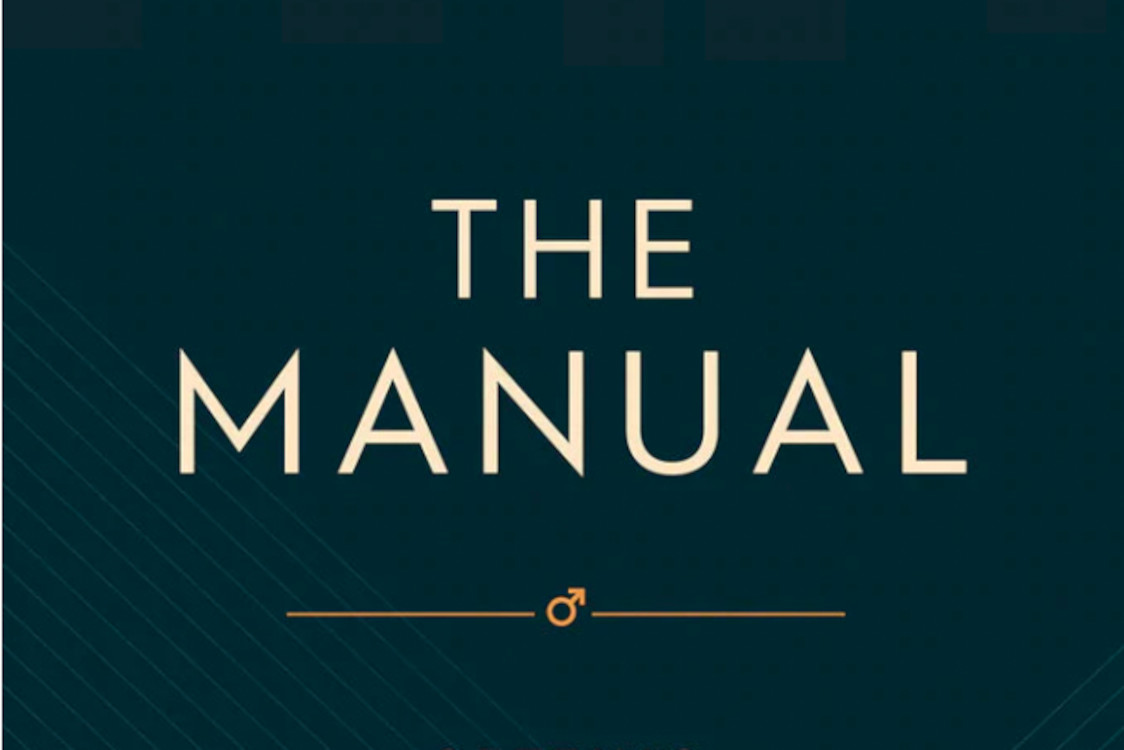A review of The Manual: Getting Masculinity Right
The Manual, by Al Stewart is a handbook on how to be a Christian man. It is also a brave book not dodging the question of “what is a man”. Not all masculinity deserves the prefix “toxic,” and The Manual seeks to be a presentation of what thoughtful masculinity could look like. For many, perhaps most, men it will work, and challenge them to become better men.
What is a man?
How does being a man differ from what is like to be a woman?
What would a book called the “Womanual” have to say? It would be a different book. How different? is an interesting question.
Early in The Manual, Stewart, a little too bravely in my view, adopts the schema of Alan Medinger, the author of Growth into Manhood, who Stewart quotes as saying “Masculine means having the qualities found especially in men. Men are those creatures who have masculine qualities.”
Medinger as quoted in The Manual outlines four qualities that he claims are masculine vs qualities he says are feminine.
- Outer-directed vs inner-directed
“The masculine faces the world: It is oriented to things; it explores; it climbs. Its energy is directed towards the physical: measuring, moving, building, conquering. The feminine looks inward toward feeling, sensing, knowing in the deepest sense. - Initiation vs response
The masculine loves to try new things; the feminine takes joy in helping and serving. The masculine proposes; the feminine accepts. - Leadership vs cohesion
For example, the masculine may be the head of the house taking leadership, but it is the feminine that will hold the family and relationships together. So often in families it’s mum who holds people and relationships together. - Truth vs mercy
The masculine seeks truth; the feminine, mercy. The masculine operates on principle; the feminine is moved by compassion.
Stewart quotes Medinger saying “Every person, male and female, embodies the masculine and the feminine. By God’s design the masculine should be predominant in the man, and the feminine in the woman.“
The word “predominant” is worth some examination. We’ll get to that later.
If Medinger is a conservative, (a noted ex-gay leader) Stewart goes on to heavily qualify the ‘“masculine” traits that assert dominance by quoting Richard Rohr, (a Franciscan priest often thought of as a theological liberal) in favour of initiation ceremonies to channel manhood.
He adopts Rohr’s list of five hard truths “about wisdom and about growing up so you can become a useful adult.”
So while accepting Medinger’s definition of masculinity, Stewart sees it as needing to be shaped or channelled into a life of serving others.
- He begins, Jordan Petersen style, with ”life is hard”, quoting the Canadian Psychologist, “life is a catastrophe filled with inevitable suffering, and you need to be ready for it, so get your act together.”
- Against a Western sense of entitlement, “You are not that important.”
- Further defying our culture ,“Your life is not about you.”
- Quoting Ecclesiastes 9:11 “The race is not to the swift or the battle to the strong,” the fourth hard truth is “You are not in control”
- The fifth hard truth is the almost safe bet “You are going to die.”
Stewart is setting hard lessons for masculinity. He says, “I know this can seem harsh or grim, but it’s certainly not all bad news. Jesus teaches these five hard lessons, but he also makes great promises to those who will trust him—promises that give a great upside to each of these truths. Understanding them in light of God’s wisdom is what truly sets us free.”
The Manual teaches a Jesus-shaped masculinity of bold service to others.
Power
A central message of The Manual is “Masculinity is fundamentally about how men use their power. When it is done in a healthy way, masculinity will serve and bless those it touches. “For Stewart, the Bible view of men, is that they have agency.
Masculinity is to be valued, but transformed in specific ways. Within that he defines Healthy masculinity this way “Healthy masculinity is a willingness to take responsibility and use the power you have to care for and nurture those around you.”
Stewart observes “So here’s the challenge. You have the ability to make a difference in the lives of those around you. I’ve called it ‘power’, but you can use other labels if you like. Whatever you want to call that ability, what are you doing with it to care for and make life better for the people around you? We’ll all have different roles in life— maybe as a son, husband, father, friend, colleague, or maybe even in our interactions with strangers. Wherever you find yourself, don’t underestimate the power you have in those relationships— power to affect lives for good.”
Please note that Stewart appropriately says the word ‘power” can be substituted. One difficulty, though is that it fits Medinger so well.
What to do with your power
Most of The Manual examines ways this power is turned from selfishness to serve others. Stewart does this well.
What does manhood look like? How should a man exercise power? Here’s a great story Stewart tells – of a man he greatly admires. I’ll quote it in full.
“At age 54, in November 2005, Peter Boyce moved to Afghanistan to work with the International Assistance Mission. Peter had lived in Sydney for most of his life, and is a vintage car nut. He’s mad about giant old Packards. He maintains them, rebuilds them, and drives them as something special for the occasional wedding. The International Assistance Mission had invited him to work with them—if you can build and maintain vintage cars in Australia, you can keep vehicles going anywhere, even in Afghanistan. Around Easter 2006, after a six-month language course, Peter was just settling into his new life when, during a phone call to his mother in Aus- tralia, he realized she was unable to care for herself. She had developed Alzheimer’s Disease, and wasn’t cooking or eating properly. She needed a full-time carer, and there was no-one else to do the job. So Peter packed up, left his job in Afghanistan, and went to care for his mother.
“It may not seem like a big sacrifice, and it’s not nearly as dramatic as leading an entire nation through the trauma of 9/11. At the time, Peter’s mother lived at Sapphire Beach near Coffs Harbour, which is a very pretty place. Yet it was a significant sacrifice: he gave four-and-a-half years of his life to care for her full-time, until she died. He still says, “It was a privilege to be able to see her continue to live in the place that she loved to the end of her life”. Peter is now back in Sydney, working and spend- ing time managing a men’s shed in the inner city so he can care for blokes and speak about knowing Jesus to those who have open ears. “
That is not the only story about patient kindness in the book. Especially in the second half which is about being a son, a friend, a worker and the roles that come later.
Really Different?
We noted that Stewart and Medinger listed characteristics that should be “by God’s design the masculine should be predominant in the man, and the feminine in the woman.“
To better understand what might be meant when it is suggested, especially by a man, that men are more assertive than women, – to take one characteristic – lets’ look at a graph.
Consider this graph of the distribution of assertiveness from a study of 13,000 people by US researchers Bobbi J. Carothers and Harry T. Reis.

The graph of assertiveness indicates that males are indeed more assertive than females, but there is a huge amount of overlap. Assertiveness is a trait more common in males – but that is an observation at a population scale, not in each individual.
Any individual woman can be more assertive than any individual man. This is not likely to be rare given the huge area of overlap. To be fair The Manual while asserting there are masculine traits does note there are overlaps.
Carothers and Reis state “Average differences between men and women are not under dispute, but the dimensionality of gender indicates that these differences are inappropriate for diagnosing gender-typical psychological variables on the basis of sex.”
By dimensionality this study means variation across a spectrum of differences.
Some traits for example, physical strength were clearly separated by sex/gender. And recent news that females do better in the schooling system than males might point to another set of clear separations.
But Carothers and Reis found other areas had a high degree of overlap. These included
• willingness to have sex outside of a relationship
• empathy for others
• caring about close relationships • closeness with a best friend
• fear of being too successful (as measured by agreement with statements like “Often the cost of success is greater than the reward”)
• interest in science
It’s important to note a disjunction here. This is a book review of a Christian book that is concerned with specifying how things should be. But these research studies observe how people behave in Western societies. We know that what the Bible teaches and how people act in our society are different things.
Another study, compared, Lesbians and gay men to heterosexuals. This study based in Germany found people naturally sorted themselves into male and female identitie, a common finding, but this one found that, lesbians and gay men did the same but were closer to a median.

This may also give an insight into why Alan Medinger, quoted as Stewart’s authority on masculinity presents his attributes in such absolutist terms. His background as an ex-gay leader, the original executive director of Exodus International in the 1980s, accompanies a personal story of seeking a secure masculine identity.
The role of stereotypes: Storming the norm
To what extent does one accept the Medinger formula? Are men to feel they should value “the physical, measuring, moving, building, conquering” and women “feeling, sensing, knowing in the deepest sense?” It may, is even likely that these qualities do tilt in the direction Medinger suggests. But should every man or woman feel they should have the traits Medinger assigns?
For example, is “power” the best way to describe whatever qualities men have? Or should have?
As we saw in our assertiveness graph, most of the population lives in the land of overlap. This will mean that in a heterosexual couple, some “masculine” traits might be more robust in the women, and in other couples, more equally shared, and so on. But there will also be some couples, perhaps a large proportion for whom the Medinger formula fits. For example, they will observe the husband as more assertive, a seeker after truth, and the wife is more concerned with relationships.
The rise of new descriptions of personal gender-neutral sexualities (“gender-fluid,” “asexual” etc) can be seen as the rejection of traditional stereotypes.
It is unfortunate if our view of masculinity does not have room for a relationship-focussed, shy or non-assertive male.
To what extent do traditional views of masculinity push people to identify as gender-fluid or asexual when they feel they don’t fit the stereotype ? Not everyone possesses the traits that society has traditionally measured as masculine and feminine according to their sex.
Manual or automatic?
The Manual gives a positive account of Masculinity, in a time when that word is often prefixed by “toxic.” That’s a welcome pushback.
As we have seen many men, maybe most, will have traditional male characteristics, and The Manual tells them how to use these for good.
But not every boy or man will fit. And they remain male. They need to be encouraged to serve too. Some might object that those that don’t fit are a small minority, but we’ll find them in most social settings, including churches.
But lets be clear: How to serve others is the major theme of the book. Stewart gives lots a lot of helpful advice on how to do that. What is questioned is whether the characteristics of masculinity are too tightly drawn in The Manual.
What ever traits you have, traditionally regarded as masculine or feminine, use them to serve others.

The Manual: Getting Masculinity Right
Al Stewart, Matthias Media
Available from the Wandering Bookseller, $24.99

